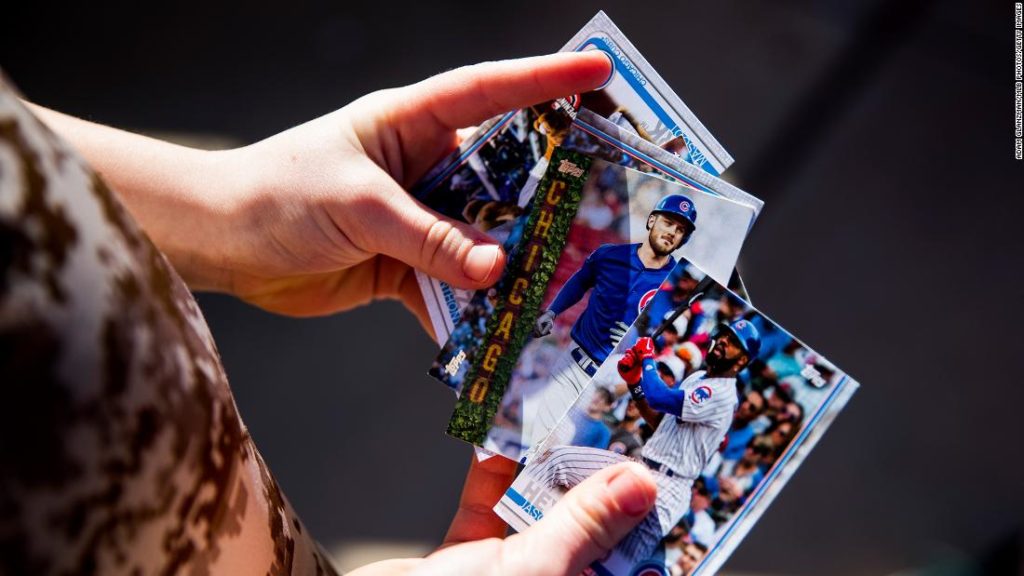In early February, a Michael Jordan rookie basketball card in pristine condition sold for a record $738,000 at an auction run by Goldin’s company. The kicker? The exact same item went for nearly $215,000 just weeks before.
“There’s never been a time like this in the history of the business,” Goldin told CNN Business. “I would bet that for every person who wanted a Michael Jordan rookie card in 2019, there’s 100 [now].”
“This is now part of our culture,” Goldin said. “I wouldn’t go anywhere near the word bubble.”
The pandemic push
Prices for top-quality cards featuring all-time greats jumped dramatically. Those featuring newer talent rose, too, as enthusiasts tried to scout the next big stars.
“Instead of betting on a game, people look at this, and they can bet on a career,” Goldin said.
The spike in prices has caught the attention of a wider class of investment professionals, flush with cash following unprecedented stimulus measures from governments and central banks. Rock-bottom interest rates have also made it harder to find lucrative investments, bolstering interest in creative alternatives.
“Funds are being created. They’re getting investors involved and pooling five, 10, 15 million dollars,” said Jesse Craig, director of business development at PWCC Marketplace, a top seller of premium cards.
“It’s hard to find someone [in] my generation whose first business wasn’t buying baseball cards when they were 10,” Luber, who is 42, told CNN Business. “We’re all of the age where we have a little bit more money, but we’re also in positions of decision-making for investment funds.”
The arrival of institutional money has quickly transformed the market. Goldin said for the first time in his career, he’s fielding calls from hedge funds interested in gaining exposure.
Takeover interest has also emerged, given the limited number of prominent companies in the sector. Last month, angel investor Nat Turner and Steve Cohen, the billionaire hedge fund titan and owner of the New York Mets, announced they were buying authentication service Collectors Universe in a $853 million deal, after sweetening a bid first made in November.
Not just Wall Street
It’s not just big money getting into the game as the sector gets a financial makeover.
“We realized the potential fractional ownership could have to break down a massive barrier to entry,” said Ezra Levine, the CEO of Collectable, which buys sports cards and converts them into tradable assets registered with the Securities and Exchange Commission.
The firm has completed roughly 40 IPOs since last fall, and boasts of impressive returns. A 1986 Jordan card that went public at $10 per share in October is now trading at $60 per share, while stock in an autographed James card from 2003 has jumped 50% since late December.
Not everyone is going this route. Other hobbyists are gathering on social media as they rip open new packs of cards, hoping they’ll contain younger talent that can later be sold for a huge profit on eBay. Some are making even bigger bets.
Is it a bubble?
Those in the business say there could be a pullback in prices for some extremely hot items, like the Jordan rookies, but they don’t think valuations are spinning out of control.
“I think trading cards are one of the most undervalued asset classes out there,” Luber said.
He added that while the 1986 Jordan card appreciated faster than he might have expected, he doesn’t think the value is out of line with where demand is headed.
Everyone in the industry thinks it’s “a $1 million card,” Luber said. “But we all thought it was a year away instead of a month away.”
Scott Keeney, who set up a fund to invest in trading cards and companies like Collectable with venture capitalists Courtney and Carter Reum, is similarly bullish. He thinks that one to two years from now, the prices that Jordan and Mantle cards are commanding will be far higher than they are now.
“We look at all these other people coming in as more validation,” Keeney said. He declined to share how much his fund had raised, beyond stating it was at least seven figures.
Goldin acknowledges that prices will inevitably fluctuate. But he believes supply will remain in check, particularly on the upper end of the market.
“The difference between cards and stock [is] nobody loves a stock,” he said. “Some people who buy these cards, to get them to sell it is like getting them to take off an arm.”
You may also like
-
Afghanistan: Civilian casualties hit record high amid US withdrawal, UN says
-
How Taiwan is trying to defend against a cyber ‘World War III’
-
Pandemic travel news this week: Quarantine escapes and airplane disguises
-
Why would anyone trust Brexit Britain again?
-
Black fungus: A second crisis is killing survivors of India’s worst Covid wave

